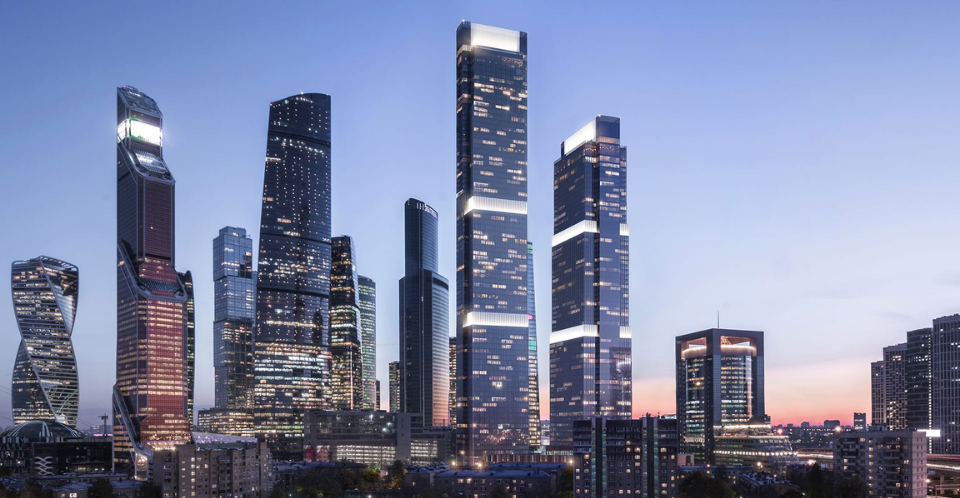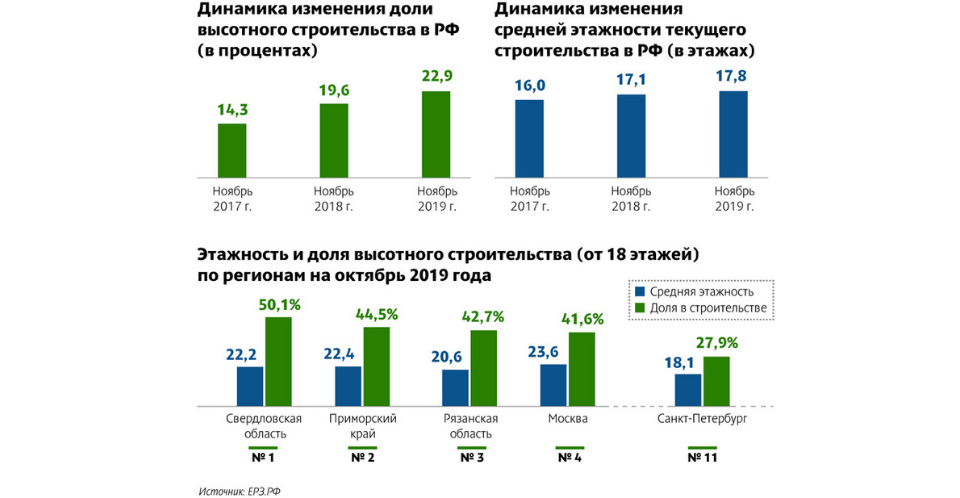In modern high-rise construction, new technologies are actively used that help speed up work and implement the most daring architectural solutions. In Russia, the height of residential buildings continues to grow. According to the ERZ.RF study, conducted jointly with the Commission of the Russian Union of Builders and Entrepreneurs for Construction and Housing Policy and the National Association of Housing Developers, at the end of November, the average number of storeys of residential buildings under construction in our country was 17.8 floors. In comparison with the same period last year, the height increased by 0.7 floors ("Construction Weekly", issue dated 12/09/2019).

In total, the share of residential buildings under construction with a height of 25 floors is now 22.9% (in square meters). For the year, the growth rate was 3.3%. The largest share of housing construction falls on houses with a height of 18–24 floors. The leader of high-rise construction is the Sverdlovsk region. This is the only region of the country where the share of high-rise construction exceeds 50%. The average number of storeys of housing under construction is 22.4 floors. Moscow ranked only fourth in the ranking. "High-rise buildings" in the capital's housing construction account for 42.4% of the total. But at the same time, Moscow leads in terms of the maximum average height of new buildings - 23.9 floors.
Petersburg, according to experts, is not included in the top ten regions, taking only 11th place in the ranking. The average height of houses here reaches 18.1 floors, which is close to the all-Russian average. The height of residential buildings is limited by local legislation. Nevertheless, St. Petersburg has its own high-rise attraction. However, it's not related to residential buildings. The height of the Lakhta Center multifunctional complex is 462 m. It is currently the tallest building in the region.

Experts note that new trends are constantly emerging and developing in modern high-rise construction. They are connected both with the architecture of objects and with their technological stuffing. This applies to both residential and office buildings. Moreover, the use of new technologies in design, the use of innovative materials make it possible to build a "high-rise" in a shorter time than 10-15 years ago. In particular, during the construction of such objects, heavy-duty concrete, a special type of reinforcement, etc. are used.
According to Metropolis Chief Project Engineer Denis Dubinin, high-rise buildings are not considered unique by chance: when designing, they are subject to more stringent requirements due to increased danger in case of unforeseen and emergency situations. In addition, these special rules are explained by the need to ensure the comfort of people staying in the building and reduce the cost of operating the facility. So, when designing high-rise buildings, proper zoning is especially important in order to reduce the number of people moving between floors. At the same time, elevator equipment must be selected carefully. It is desirable that it has a high degree of automation, when the system determines the most advantageous use of the available elevators in a particular situation. Mandatory for high-rise objects are aerodynamic tests to determine the wind loads - often they exceed the seismic load. Special requirements are also imposed on fire safety systems, evacuation of people, and lightning protection. Systems must be not only efficient, but also more durable than conventional facilities. “Many high-rise buildings have a large surface or even an all-glass façade. To comply with the principles of energy efficiency, such facades must be made of glass, which has a minimum loss of heat. This is necessary in order not to create additional loads on the ventilation and heating systems in summer and winter, respectively. Special requirements are also imposed on the maintenance of facades. In general, energy efficiency is very important for high-rise buildings, as the cost of engineering systems increases with each meter of height. To evaluate the decisions made, buildings are certified by various types, for example, according to the LEED standard,” emphasizes Denis Dubinin.
Read the full material on ASN-info.ru.












